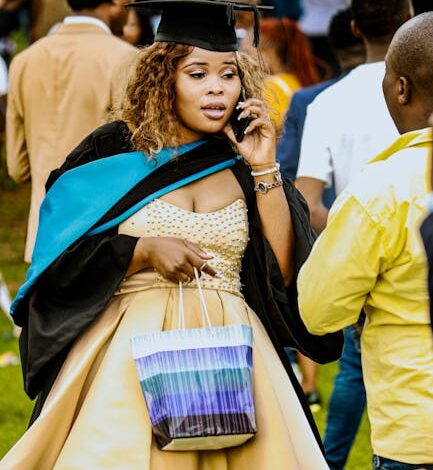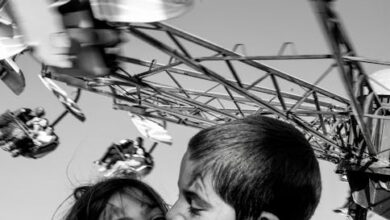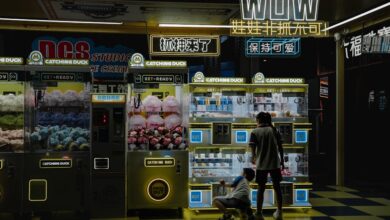OpenAI Is Preparing to Launch a Social App for AI-Generated Videos

OpenAI Is Preparing to Launch a Social App for AI-Generated Videos
Estimated reading time: 7 minutes
- OpenAI is developing a social media app for AI-generated videos, reportedly similar to TikTok and powered by their advanced Sora 2 model.
- This platform aims to democratize video content creation, enabling users to produce cinematic-quality videos from simple text prompts, significantly reducing time and effort.
- The move signifies a major shift in creative expression, offering unparalleled accessibility and speed for visual storytelling across various industries and individual creators.
- While presenting immense opportunities for innovation and personalized content, the app also introduces challenges related to content moderation, deepfakes, intellectual property, and ensuring ethical AI use.
- Brands and creators should proactively prepare by experimenting with existing AI video tools, developing ethical content guidelines, and brainstorming AI-specific content strategies to leverage this upcoming revolution.
- OpenAI Is Preparing to Launch a Social App for AI-Generated Videos
- Key Takeaways
- Table of Contents
- The Dawn of AI-Powered Social Media: What We Know So Far
- Beyond TikTok: OpenAI’s Vision for Creative Expression
- Navigating the New Frontier: Opportunities and Challenges
- Preparing for the Revolution: How Brands and Creators Can Adapt
- Conclusion
- Frequently Asked Questions
The digital landscape is on the cusp of another seismic shift, with reports indicating that OpenAI, the visionary force behind ChatGPT and Sora, is developing a groundbreaking social media application. This isn’t just another platform; it’s poised to redefine how we consume and create video content, leveraging the cutting-edge capabilities of artificial intelligence. The prospect of an app that democratizes high-quality video production through AI generation is both thrilling and transformative, promising to unleash a new wave of creativity and interaction.
For years, content creation has been a blend of skill, equipment, and time. While platforms like TikTok have lowered the barrier to entry for video, generating polished, imaginative content still requires significant effort. OpenAI’s rumored foray into social media seeks to dismantle these barriers entirely, placing the power of advanced video generation directly into the hands of everyday users. This development marks a pivotal moment, signaling a future where imagination is the only real limit to visual storytelling.
The Dawn of AI-Powered Social Media: What We Know So Far
Whispers from the tech industry suggest that OpenAI is not merely dabbling in social media but is building a platform designed from the ground up to integrate AI-generated videos seamlessly. This revolutionary approach stands to disrupt the existing order of short-form video applications, offering users unparalleled creative freedom and efficiency. Imagine conjuring entire scenes, characters, and narratives with simple text prompts, then sharing them instantly within a vibrant community.
The implications for content creators, marketers, and casual users are immense. Instead of spending hours on filming, editing, and post-production, users could potentially generate cinematic quality videos in minutes. This speed and accessibility could lead to an explosion of diverse and imaginative content, catering to every niche and interest imaginable. The platform’s core appeal lies in transforming complex creative processes into intuitive, AI-driven commands.
Crucially, the platform appears to closely resemble TikTok and is powered by Sora 2, OpenAI’s latest video generation model. This vital detail underscores the ambition behind the project. Sora 2 represents a significant leap in generative AI, capable of producing highly realistic and coherent videos from textual descriptions, complete with intricate details, complex camera motions, and dynamic characters. The choice to mirror TikTok’s successful short-form video format is strategic, aiming to capitalize on familiar user behaviors while introducing a fundamentally new content creation paradigm.
Integrating Sora 2 directly into a social application means users won’t need specialized software or technical expertise. The AI will handle the heavy lifting, translating abstract ideas into tangible visual narratives. This could unlock creativity for millions who previously lacked the tools or skills to produce high-quality video content, fostering a more inclusive and imaginative digital community.
Beyond TikTok: OpenAI’s Vision for Creative Expression
While the resemblance to TikTok might initially suggest a direct competitor, OpenAI’s true vision likely extends far beyond merely replicating existing social media models. The integration of a powerful generative AI like Sora 2 hints at an ambition to redefine creative expression itself. This platform isn’t just about sharing videos; it’s about making video creation accessible, instantaneous, and limited only by one’s imagination.
Consider the potential for personalized narratives. Users could generate videos tailored precisely to their interests, featuring themselves in fantastical scenarios or experiencing dream-like adventures. Educational content could become hyper-engaging, with AI creating animated explanations on demand. Musicians might generate entire music videos in moments, experimenting with visual styles that once required vast budgets and crews.
The “social” aspect will be critical. How will users interact with AI-generated content? Will there be collaborative features, allowing multiple users to contribute prompts to a single video? Could AI personalize content feeds in unprecedented ways, not just recommending existing videos but generating entirely new ones based on individual preferences and viewing habits? These questions highlight the vast, unexplored territory OpenAI is venturing into, pushing the boundaries of what social media can be.
The platform could also serve as a groundbreaking sandbox for creative professionals and emerging artists. They could rapidly prototype ideas, experiment with visual themes, and generate countless variations of a concept without the traditional constraints of time and resources. This democratization of high-end video production could foster entirely new artistic movements and styles, making professional-grade visuals accessible to everyone.
Navigating the New Frontier: Opportunities and Challenges
The advent of an OpenAI social app for AI-generated videos presents a wealth of opportunities but also significant challenges that must be addressed. On the opportunity front, we could witness an explosion of creative content unlike anything seen before. Businesses could generate highly personalized marketing campaigns at scale, educators could craft engaging visual aids instantly, and individuals could express themselves with unparalleled visual artistry.
The platform could become a hub for niche communities, where users generate and share content around highly specific interests that would be impractical to film conventionally. From historical reenactments of ancient civilizations to speculative fiction scenarios, the possibilities for unique content creation are boundless. This could lead to a highly diverse and vibrant content ecosystem, catering to every conceivable human interest.
However, the challenges are equally profound. Content moderation will be an immense task. Ensuring ethical use, preventing the spread of deepfakes, misinformation, or harmful content generated by AI will require robust systems and potentially new forms of oversight. Questions around intellectual property and copyright for AI-generated works will become more urgent, requiring new legal frameworks and community guidelines.
Another concern is the potential for AI-generated content to dilute authentic human experiences or even create a sense of detachment. Balancing the incredible capabilities of AI with the need for genuine human connection and expression will be a delicate act. OpenAI will need to establish clear policies and technological safeguards to foster a responsible and enriching environment, rather than one ripe for exploitation or artificiality.
Preparing for the Revolution: How Brands and Creators Can Adapt
For brands, marketers, and individual creators, the emergence of an AI-powered social video platform is not just a novelty but a call to action. Proactive adaptation will be key to harnessing its immense potential and staying ahead in an increasingly dynamic digital world. Understanding the capabilities and limitations of AI video generation now will provide a crucial competitive edge.
This is a moment to rethink traditional content strategies. If high-quality video can be generated instantly, the emphasis shifts from technical execution to creative ideation and strategic application. Brands might pivot from costly production shoots to investing in skilled prompt engineers and imaginative storytellers. Creators will need to cultivate a unique voice and aesthetic that leverages AI’s capabilities without sacrificing authenticity.
Here are three actionable steps to prepare for this impending shift:
- Start Experimenting with Existing AI Video Tools: Familiarize yourself with current AI video generation platforms (e.g., RunwayML, HeyGen, Pika Labs, or even OpenAI’s own Sora demos when they become more widely accessible). Understand the workflow, the types of outputs possible, and the nuances of crafting effective prompts. This hands-on experience will be invaluable.
- Develop a Framework for Ethical AI Content Creation: Begin considering how your brand or personal content will maintain transparency and authenticity when using AI. Establish guidelines for disclosing AI-generated elements, mitigating bias, and ensuring your content remains ethical and responsible. Proactive ethical considerations will build trust with your audience.
- Brainstorm AI-Specific Content Concepts: Shift your creative thinking towards ideas that are uniquely enabled by AI video generation. Consider scenarios that would be impossible or prohibitively expensive to film conventionally. Think about rapid prototyping for marketing campaigns, personalized narratives for target audiences, or highly imaginative storytelling that leverages AI’s limitless visual possibilities.
Real-World Example:
Imagine a small independent musician who previously struggled to afford professional music videos. With OpenAI’s app, they could input lyrics and a desired aesthetic (“neoclassical cyberpunk cityscape,” “dreamy ethereal forest,” or “retro 80s arcade battle”) and instantly generate multiple versions of a visually stunning music video. This dramatically reduces production costs and time, allowing them to focus on their music and rapidly iterate on visual concepts to find the perfect match for their sound, launching their artistic vision without traditional limitations.
Conclusion
OpenAI’s rumored social app for AI-generated videos, powered by the advanced capabilities of Sora 2, represents not just an evolution, but a revolution in digital content and social interaction. By merging cutting-edge AI with an intuitive social platform, it promises to democratize video creation, unlocking unprecedented levels of creativity for individuals and organizations alike. While challenges surrounding ethics, moderation, and authenticity remain, the potential for innovative expression and community building is immense. The digital world is on the cusp of a truly transformative experience, where the boundary between imagination and reality in video content becomes increasingly blurred.
The future of social media is arriving sooner than you think. Stay informed, start exploring the possibilities of AI video generation today, and prepare to be part of the next wave of digital storytelling. Don’t just watch the revolution unfold – create in it!
Frequently Asked Questions
-
Q: What is OpenAI’s rumored social app for AI-generated videos?
A: It’s a new social media platform reportedly under development by OpenAI, designed to allow users to create and share AI-generated videos using simple text prompts. It is expected to resemble TikTok and be powered by OpenAI’s advanced Sora 2 model.
-
Q: How will Sora 2 enhance the app’s capabilities?
A: Sora 2 is OpenAI’s latest video generation model, capable of producing highly realistic and coherent videos from textual descriptions. Integrating it directly into the app means users can generate complex scenes, characters, and narratives with cinematic quality in minutes, without needing specialized software or technical expertise.
-
Q: What are the main benefits for content creators?
A: Creators will experience significantly reduced production costs and time, allowing them to focus on creative ideation. It democratizes high-quality video production, enabling rapid prototyping, experimentation with visual styles, and the creation of highly imaginative content previously impossible or prohibitively expensive.
-
Q: What challenges might this new platform face?
A: Key challenges include robust content moderation to prevent deepfakes, misinformation, and harmful content. Questions around intellectual property and copyright for AI-generated works, and balancing AI capabilities with genuine human connection, will also need to be addressed through clear policies and safeguards.
-
Q: How can brands and individuals prepare for this revolution?
A: It’s recommended to start experimenting with existing AI video generation tools, develop ethical frameworks for AI content creation to maintain transparency, and brainstorm AI-specific content concepts that leverage the unique possibilities offered by generative AI video.





